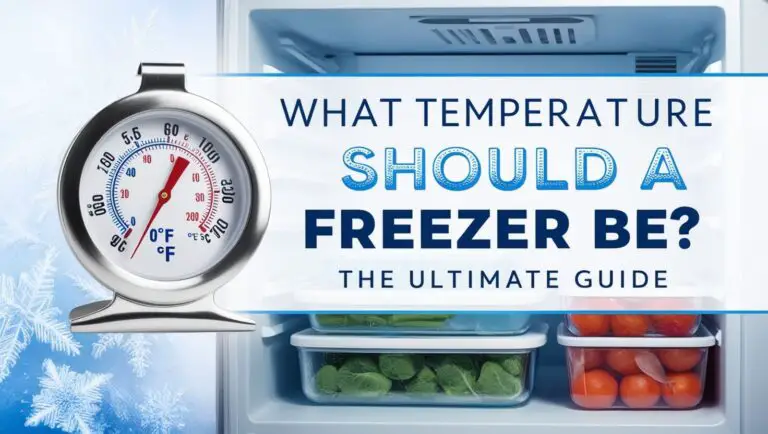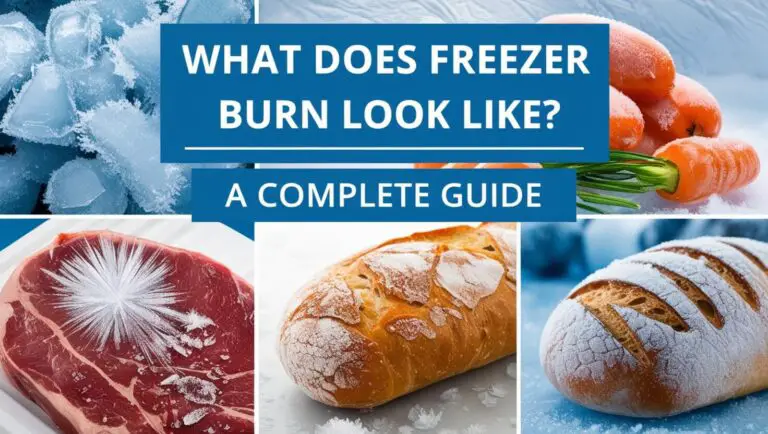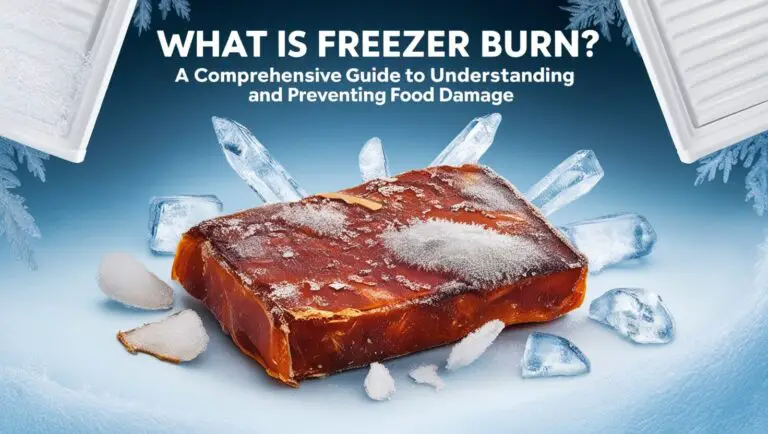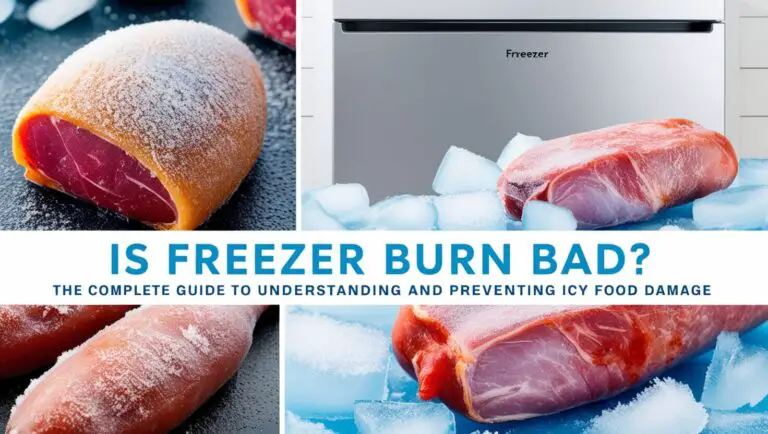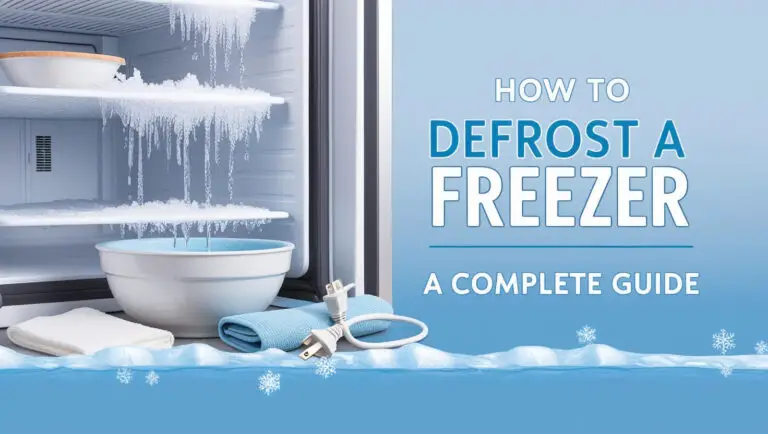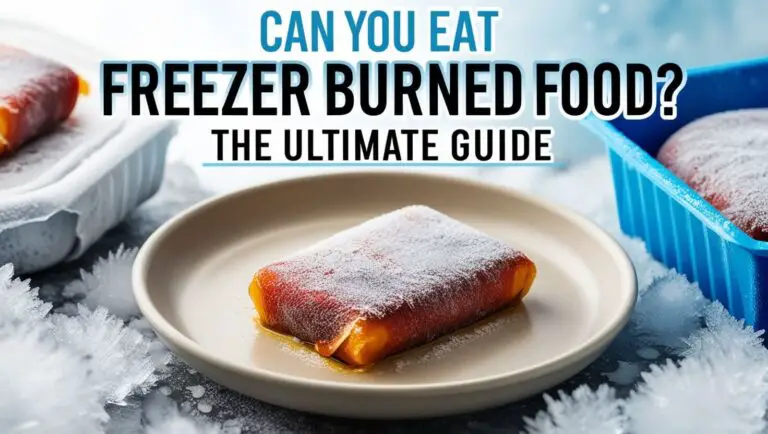What Causes Freezer Burn: A Comprehensive Guide
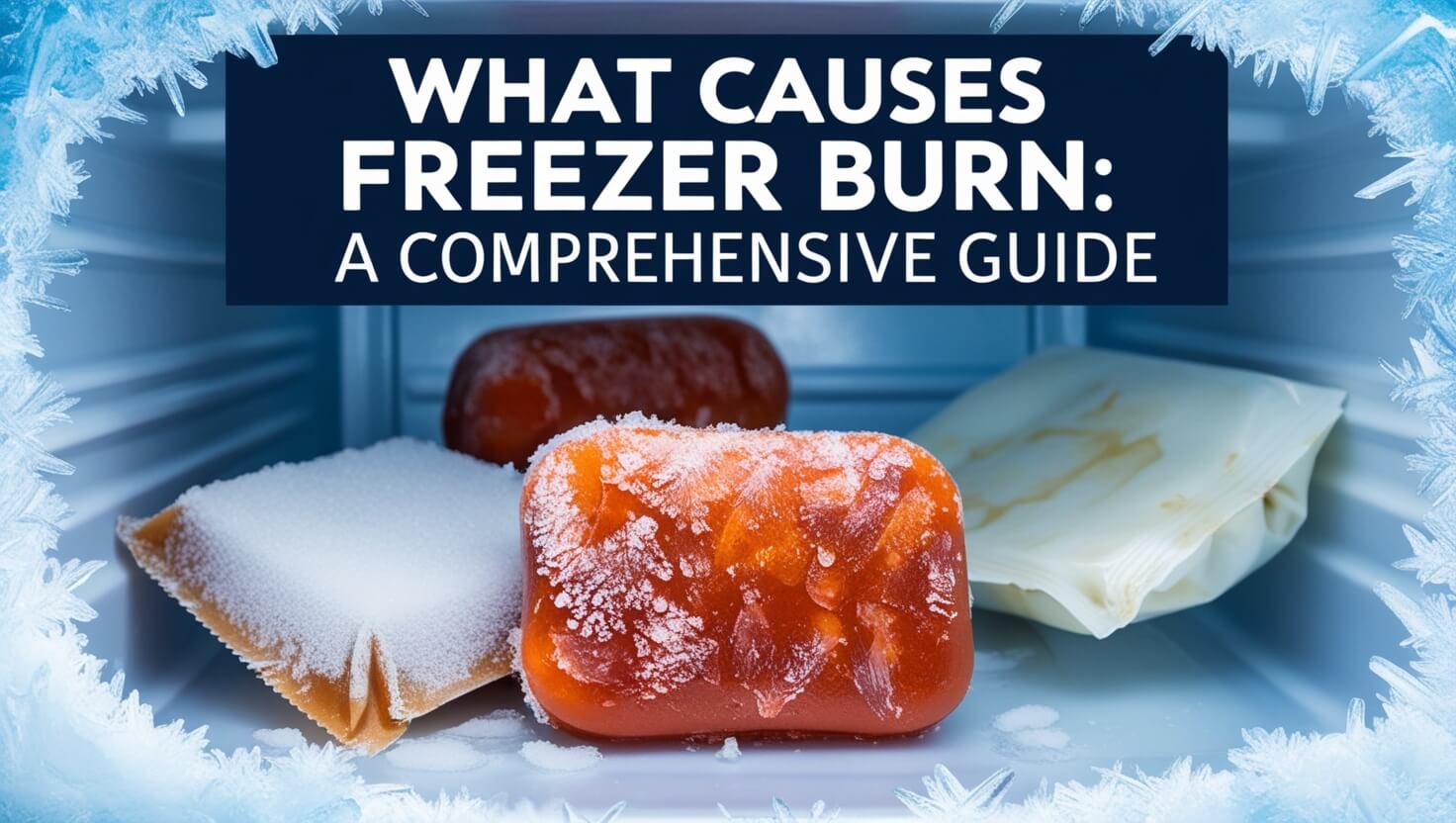
Have you ever reached into your freezer, excited to prepare a meal, only to find your food covered in ice crystals and looking dried out? That’s freezer burn, and it’s a common issue that affects the quality of frozen foods. In this comprehensive guide, we’ll explore what causes freezer burn, how it affects different types of food, and most importantly, how you can prevent it to keep your frozen foods tasting fresh and delicious.
Introduction
Freezer burn occurs when frozen food loses moisture due to air exposure and temperature fluctuations. While it doesn’t make food unsafe to eat, it can significantly impact taste, texture, and overall quality. Understanding the causes of freezer burn is crucial for anyone who wants to maintain the best possible quality of their frozen foods and reduce food waste.
The Science Behind Freezer Burn
What Exactly Is Freezer Burn?
Freezer burn is a condition that affects frozen foods when they’re exposed to air in the freezer. It’s not actually a “burn” in the traditional sense, but rather a process of dehydration and oxidation that occurs at very low temperatures.
The Process of Sublimation
At the heart of freezer burn is a process called sublimation. This is when ice transitions directly from a solid to a gas, bypassing the liquid state. In your freezer, the water molecules in your frozen food can sublimate, leaving behind dry, discolored patches.
How Ice Crystals Form on Frozen Foods
When food is frozen, the water inside it forms ice crystals. These crystals can grow larger over time, especially if there are temperature fluctuations in your freezer. As they grow, they can damage the cell structures of the food, leading to texture changes and moisture loss.
Primary Causes of Freezer Burn
Exposure to Air: The Main Culprit
The most significant cause of freezer burn is exposure to air. When frozen food isn’t properly sealed, the dry air in the freezer can cause moisture to escape from the food’s surface, leading to dehydration and oxidation.
Temperature Fluctuations in Your Freezer
Inconsistent freezer temperatures can exacerbate freezer burn. When temperatures rise, even slightly, it can cause some thawing and refreezing, which leads to larger ice crystals and more moisture loss.
Length of Time in the Freezer
The longer food stays in the freezer, the more likely it is to develop freezer burn. Even well-packaged foods can eventually succumb to freezer burn if stored for extended periods.
Factors That Accelerate Freezer Burn
Improper Packaging Techniques
Using the wrong packaging or not sealing food properly can speed up the freezer burn process. Thin plastic wraps, containers with air gaps, or reused packaging that doesn’t seal well are all culprits.
Overfilling Your Freezer
When a freezer is too full, it can restrict air circulation, leading to uneven cooling and potential temperature fluctuations that contribute to freezer burn.
Frequent Opening and Closing of the Freezer Door
Every time you open your freezer door, warm air rushes in. This can cause temperature fluctuations and increase the likelihood of freezer burn, especially for items near the front of the freezer.
How Different Foods Are Affected by Freezer Burn
Meats and Freezer Burn
Meats are particularly susceptible to freezer burn due to their high moisture content. Freezer-burned meat often develops grayish-brown spots and can become tough and dry when cooked.
Fruits and Vegetables: Susceptibility to Freezer Burn
Fruits and vegetables with high water content, like berries and leafy greens, can quickly develop freezer burn. This often results in a loss of color, flavor, and nutritional value.
Dairy Products and Ice Cream: Unique Freezer Burn Challenges
Ice cream and other dairy products are prone to developing large ice crystals, which can lead to a gritty texture. Freezer-burned ice cream often has a layer of frost on top and can taste stale.
Identifying Freezer Burn: Signs to Look For
Visual Indicators of Freezer Burn
Freezer burn typically appears as discolored patches on food. On meats, it might look gray or brown, while on other foods, it could appear as white or grayish spots.
Textural Changes in Freezer-Burned Foods
Freezer-burned foods often feel tough, leathery, or have a spongy texture due to the loss of moisture and the formation of large ice crystals.
Taste Alterations Due to Freezer Burn
Foods affected by freezer burn often taste bland or have an off-flavor. This is due to the loss of moisture and oxidation of fats in the food.
The Impact of Freezer Burn on Food Quality
Nutritional Changes in Freezer-Burned Foods
While freezer burn doesn’t make food unsafe, it can lead to a loss of vitamins and minerals, particularly water-soluble vitamins like vitamin C.
Safety Concerns: Is Freezer-Burned Food Safe to Eat?
Freezer-burned food is generally safe to eat, as the low temperatures prevent bacterial growth. However, the quality of the food will be compromised, affecting taste and texture.
How Freezer Burn Affects Taste and Texture
Freezer burn can make food taste dry, tough, and less flavorful. The texture often becomes unpleasantly chewy or grainy, depending on the type of food.
Preventing Freezer Burn: Best Practices
Proper Packaging Techniques to Avoid Freezer Burn
Use airtight, moisture-proof packaging designed for freezer use. Remove as much air as possible before sealing, and consider double-wrapping particularly sensitive foods.
Optimal Freezer Temperature Settings
Keep your freezer at a constant 0°F (-18°C) or below. Use a freezer thermometer to monitor the temperature regularly.
Organizing Your Freezer for Minimal Freezer Burn
Arrange items so that older foods are in front and easily accessible. This encourages rotation and reduces the time food spends in the freezer.
Tools and Products to Combat Freezer Burn
Vacuum Sealers: A Game-Changer in Freezer Storage
Vacuum sealers remove air from packaging, significantly reducing the risk of freezer burn. They’re especially useful for long-term storage of meats and other high-moisture foods.
Best Freezer Containers and Bags
Look for freezer-specific containers and bags that are thick, durable, and seal tightly. Avoid using regular food storage containers, which may not be airtight enough for freezer use.
Innovative Freezer Technologies That Reduce Freezer Burn
Some modern freezers come with features like rapid freeze functions or air purification systems that can help reduce freezer burn by minimizing temperature fluctuations and removing odors that can affect food quality.
Freezer Burn and Different Appliance Types
Chest Freezers vs. Upright Freezers: Which Is Better for Preventing Freezer Burn?
Chest freezers generally maintain more consistent temperatures and are better at preventing freezer burn. However, upright freezers offer easier organization and access to food items.
Self-Defrosting vs. Manual Defrost Freezers: Impact on Freezer Burn
Manual defrost freezers can be more effective at preventing freezer burn as they maintain a more consistent temperature. However, self-defrosting freezers are more convenient and can still be effective if used properly.
Dealing with Freezer-Burned Food
Can You Salvage Freezer-Burned Food?
In many cases, you can still use freezer-burned food, especially if the burn is minimal. Cut away affected areas on solid foods, and use freezer-burned items in recipes where texture is less important, like soups or stews.
Cooking Tips for Freezer-Burned Ingredients
When using freezer-burned meats, consider marinating them to add moisture and flavor. For fruits and vegetables, use them in smoothies or cooked dishes where texture changes are less noticeable.
When to Discard Freezer-Burned Items
If the freezer burn is extensive or the food has an off-odor, it’s best to discard it. Trust your senses – if it doesn’t look or smell right, it’s better to be safe than sorry.
Common Myths About Freezer Burn Debunked
Misconceptions About Causes of Freezer Burn
Myth: Freezer burn is caused by food being frozen for too long. Reality: While time is a factor, proper packaging and stable temperatures are more important in preventing freezer burn.
Myth: Freezer-burned food is unsafe to eat. Reality: Freezer burn affects quality but not safety, as long as the food has remained frozen.
False Prevention Methods to Avoid
Myth: Wrapping food in aluminum foil prevents freezer burn. Reality: Foil alone isn’t moisture-proof and can actually promote freezer burn. Use freezer-specific packaging instead.
Myth: Freezing food at a lower temperature prevents freezer burn. Reality: Extremely low temperatures can actually accelerate freezer burn. Stick to the recommended 0°F (-18°C).
Expert Tips for Long-Term Freezer Storage
Ideal Freezer Storage Times for Different Foods
- Meats: 4-12 months depending on the type
- Fruits and vegetables: 8-12 months
- Dairy products: 3-6 months
- Bread and baked goods: 2-3 months
Labeling and Rotation Strategies
Use a “first in, first out” system. Label all items with the contents and date frozen. Place newer items in the back and move older items to the front for easy access.
Batch Cooking and Freezing: Minimizing Freezer Burn Risks
When batch cooking, cool foods quickly before freezing to minimize ice crystal formation. Portion foods into meal-sized servings to reduce the need for repeated thawing and refreezing.
In Conclusion
Understanding what causes freezer burn is the first step in preventing it and maintaining the quality of your frozen foods. By implementing proper packaging techniques, maintaining consistent freezer temperatures, and following best practices for freezer organization and food rotation, you can significantly reduce the occurrence of freezer burn.
Remember, while freezer burn doesn’t make food unsafe to eat, it can severely impact taste, texture, and nutritional value. By taking proactive steps to prevent freezer burn, you’ll not only enjoy better-tasting meals but also reduce food waste and save money in the long run.
Proper freezer management is an often-overlooked aspect of food preparation and storage, but it’s crucial for maintaining the quality of your frozen foods. By applying the knowledge and tips shared in this guide, you can ensure that your frozen foods remain as fresh and delicious as possible, ready to be transformed into satisfying meals whenever you need them.

